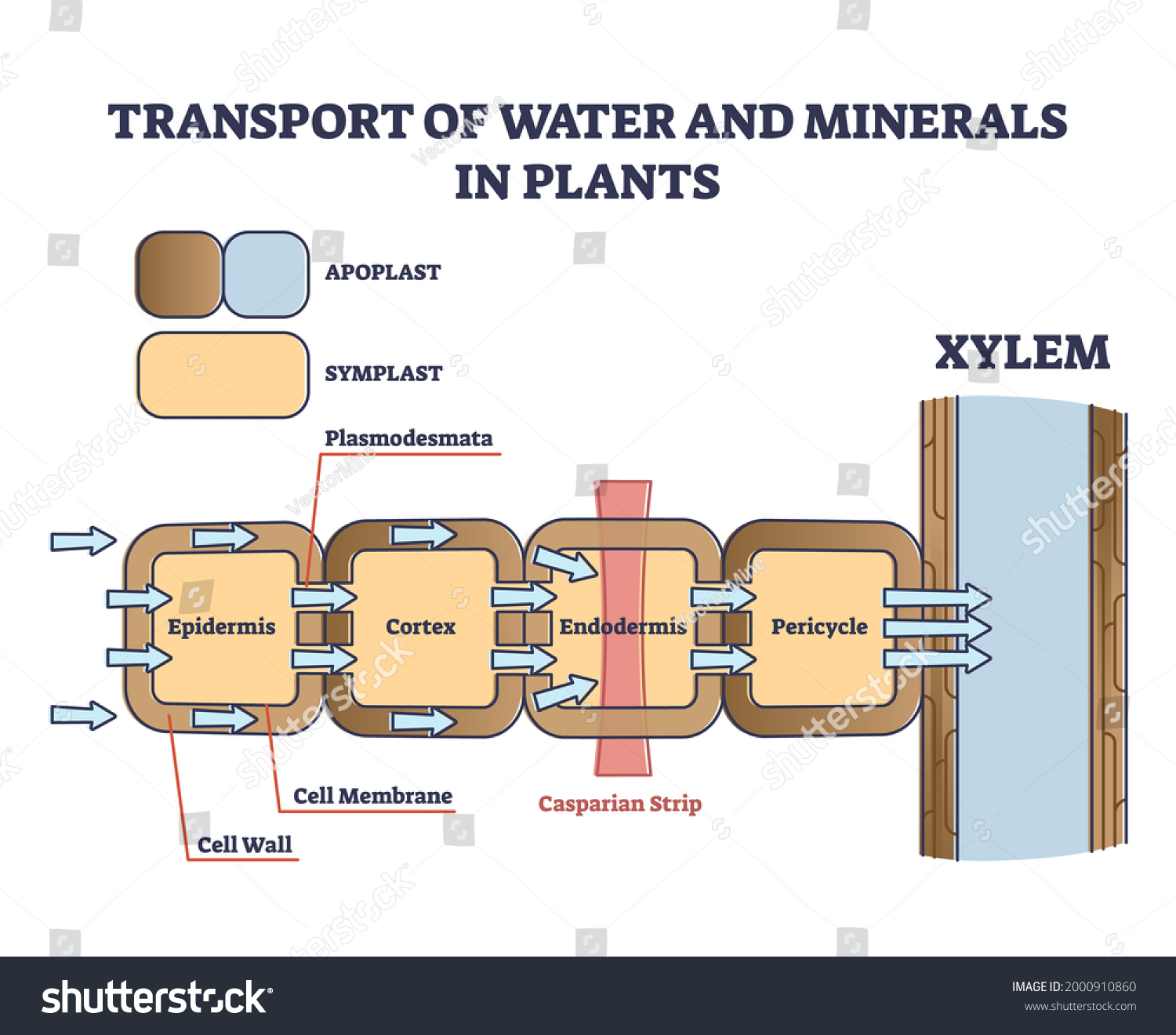Introduction
When it comes to understanding the transport of water and nutrients in plants, the concepts of apoplast and symplast are crucial. Plants have two primary transport systems that work together to move water and nutrients from the roots to the shoots and leaves. These transport systems are called the apoplast and symplast pathways. Both apoplast and symplast are pathways for transporting substances in plants, but they differ in their structure and function.
Apoplast and Symplast
Apoplast and symplast are two different pathways that play crucial roles in plant transport and cellular communication. These pathways are responsible for the movement of water, nutrients, and signaling molecules in the plant’s body.
Definition
The apoplast pathway is involved in transporting water and nutrients through the non-living components of the plant, such as the cell walls. This pathway is important for the movement of water from the soil to the roots, and then up through the stem and into the leaves. Some key features of the apoplast pathway include:
- Water and nutrients move through the apoplast pathway by diffusion or by mass flow.
- The apoplast pathway does not require any metabolic energy to function.
- Substances that move through the apoplast pathway are not regulated by the plant.
The symplast pathway is involved in transporting water and other substances through the living cells of the plant, via plasmodesmata. This pathway is important for the movement of substances from cell to cell within the plant. Some key features of the symplast pathway include:
- The symplast pathway requires metabolic energy to function, as substances must pass through living cells.
- The symplast pathway is regulated by the plant, allowing for selective transport of certain substances.
- The symplast pathway is important for the movement of signaling molecules within the plant.
Function of Apoplast and Symplast
The apoplast pathway is responsible for the transport of water and solutes through the cell walls and extracellular spaces. It acts as a physical barrier that restricts the movement of some molecules, like ions and macromolecules. This pathway is important for the uptake of water and minerals from the soil, as well as for the transport of nutrients and signaling molecules in the plant’s body.
The symplast pathway is responsible for the transport of water and solutes through the cytoplasm of living cells. It allows for the direct exchange of molecules between cells, bypassing the physical barriers of cell walls and extracellular spaces. This pathway is important for the long-distance transport of water and nutrients, as well as for the coordination of developmental processes and responses to environmental cues.

Apoplast and symplast differences
Apoplast and symplast are two pathways involved in the transport of water and nutrients in plant tissues. Here are the main differences between the two:
- Apoplast: The apoplast is the network of cell walls and intercellular spaces in plant tissues. It allows for the movement of water and dissolved substances such as minerals and sugars through the cell walls and intercellular spaces. The apoplast is an extracellular pathway, meaning that the transported substances remain outside of the cells. The movement of water through the apoplast is passive and occurs by diffusion and capillary action.
- Symplast: The symplast is the network of interconnected living cells in plant tissues. It consists of the cytoplasm of the cells, which is connected by plasmodesmata (tiny channels between cells). The symplast allows for the movement of water and dissolved substances between cells, and is therefore an intracellular pathway. The movement of substances through the symplast is controlled by active transport mechanisms, such as ion pumps and membrane transporters.
Interaction between Apoplast and Symplast
The apoplast and symplast pathways are not mutually exclusive, and they work together to support the growth and development of plants. Water and nutrients can move from the soil into the root cells via the apoplast pathway, and then enter the symplast pathway for transport to other parts of the plant. The symplast pathway also allows for communication between cells, as signaling molecules can move through plasmodesmata.
Conclusion
In conclusion, the apoplast and symplast pathways are critical for the transport of water and nutrients in plants. The apoplast pathway involves movement of substances outside of the cell membrane, while the symplast pathway involves movement of substances through the cytoplasm of interconnected cells. Although they differ in structure and function, the apoplast and symplast pathways work together to support the growth and development of plants. Understanding the differences between apoplast and symplast can provide valuable insights into plant physiology and help in optimizing plant growth and development.
Frequently Asked Questions
1. What is the role of the symplast pathway in plants?
The symplast pathway is important for the movement of water and other substances through the living cells of the plant, via plasmodesmata.
2. Is apoplast active or passive absorption?
The apoplast is the passive absorption that occurs via the root’s apoplast, which includes the cell wall and intercellular gaps.
3. What is the importance of the Casparian strip?
The Casparian strip is a band of specialized cells in the roots of plants that encircle the endodermis, which is the innermost layer of cells in the root cortex. It is made up of a waterproof substance called suberin, which prevents water and solutes from moving freely between cells and forces them to pass through the selectively permeable plasma membrane of endodermal cells. The importance of the Casparian strip lies in its role in regulating the movement of water and nutrients from the soil into the plant.